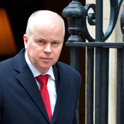In the spring of 2016, I had a long, caffeine-infused discussion with one of Prime Minister Justin Trudeau’s advisers about the process for appointing judges to the Supreme Court of Canada. The PM’s advisers reached out to a large and diverse group of academics and practitioners around this time. Trudeau’s first appointment was coming up and informal consultations were a necessary precursor to putting in place a new appointments process.
Our discussion was very broad, but we agreed that the British approach to Supreme Court appointments was the “gold standard,” a model which Canadians could and should aspire to. So when Geoffrey Cox MP, the former attorney general, recently commented that Britain could learn something from Canada, I quietly chuckled to myself. Cox has now been replaced by Suella Braverman, but the place of the judiciary in the UK continues to attract discussion. The proper role of a judge in a democracy is likely to be central to the mandate of the planned constitution, democracy and rights commission
Are there any lessons in the Canadian model? Despite my amusement, Cox may have a point. From a British perspective, Trudeau’s reforms have two particularly interesting aspects: holding a public parliamentary hearing with the successful applicant; and publishing the completed questionnaire of the successful applicant for a vacancy. These will be especially interesting for those concerned (as the Boris Johnson ministry seems to be) about judicial overreach in the United Kingdom.
In earlier eras in Canada, judicial appointments, including Supreme Court of Canada appointments, were made in the absolute discretion of the prime minister of the day, in a process hidden from public scrutiny. Trudeau’s predecessors, Paul Martin and Stephen Harper, made efforts to increase the transparency of the process. But Harper’s commitment to this process waned after his appointment of Marc Nadon was, in highly unusual circumstances, invalidated by the Supreme Court.
Trudeau wished to go further and, in 2016, the retirement of Justice Cromwell presented him with the opportunity to put a new process in place. Trudeau created an independent advisory board and tasked it with creating a shortlist of three to five candidates. The position was advertised and applications were received—the application form, which was drafted by three of my University of Ottawa colleagues, poses a series of questions about the applicant’s legal acumen and perception of the role of the Canadian judiciary. After interviewing ten candidates, the Advisory Board provided Trudeau with an unranked shortlist of five names. Once the nomination of Malcolm Rowe had been announced, the chair of the advisory board and the minister of justice appeared before a parliamentary committee to discuss the process. The nominee also appeared and fielded questions from parliamentarians in a session moderated by a law professor.
Three appointments have now been made under the new process—Justices Rowe (2016), Sheila Martin (2017) and Nicholas Kasirer (2019)—and some general lessons can safely be drawn about the parliamentary hearing and the questionnaire, and may be of interest for those considering reforms to the UK’s appointment process.
Having the nominee appear before a parliamentary committee certainly gives Supreme Court judges public visibility which they would otherwise not have. There tends to be significant and sustained media attention around the time of the nomination and hearing, which elevates the Supreme Court into the public eye. While it is tempting to say that judges should—unlike young children—be heard but not seen, the modern trend is towards greater visibility. Senior judges appear before parliamentary committees, publish annual reports and hold press conferences; and across the world judges regularly give public addresses and speeches. They are no longer the cloistered monks of yesteryear. There would be nothing particularly unusual, therefore, about asking nominees to appear before a committee of MPs. Indeed, pre-appointment hearings would arguably be a logical extension of the wide range of public-facing activities engaged in by modern judges.
Care must nonetheless be exercised with parliamentary hearings. No sensible person wants the Canadian (or future British) hearings to devolve into the Congressional carnival that awaits nominees to the US Supreme Court. In Canada, deference from parliamentarians towards the nominee means that generalities abound in both the questions and the answers, with the law professor moderator steering questioners away from any controversial topics. Lawyers might find the hearings bland but public confidence in the institutions of government is likely if anything to be enhanced by exposure to such hearings.
Meanwhile, the questionnaires provide a wealth of information about the nominee’s judicial philosophy. Of particular interest to contemporary British readers will be the section asking the nominee to “Describe the appropriate role of a judge in a constitutional democracy.” Nominees’ answers to these questions can inform the prime minister’s choice and, perhaps more importantly, nourish public and academic debate about judicial decision-making. Indeed, it is not inconceivable that the mere fact that such questions are being posed—with answers provided publicly—might concentrate judges’ minds on the issue of whether their powers are being exercised appropriately.
There is some irony in Britain looking to Canada when its own system was seen, not so long ago, as a “gold standard” to attain, but the Canadian experience might nonetheless stimulate useful British reforms. Quite what would be needed in the way of statutory and regulatory reform in the United Kingdom is another question entirely but in thinking in broad terms about Supreme Court appointments, policy-makers in London can safely cast a Transatlantic gaze in the direction of Ottawa.
Can the UK learn from how Canada appoints its judges?
Those seeking reform might study how Trudeau revolutionised the process
March 02, 2020

Prime Minister Justin Trudeau speaks with Supreme Court Chief Justice Robert Wagner as they wait for the Speech from the Throne to begin, Thursday December 5, 2019 in Ottawa. THE CANADIAN PRESS/Sean Kilpatrick











